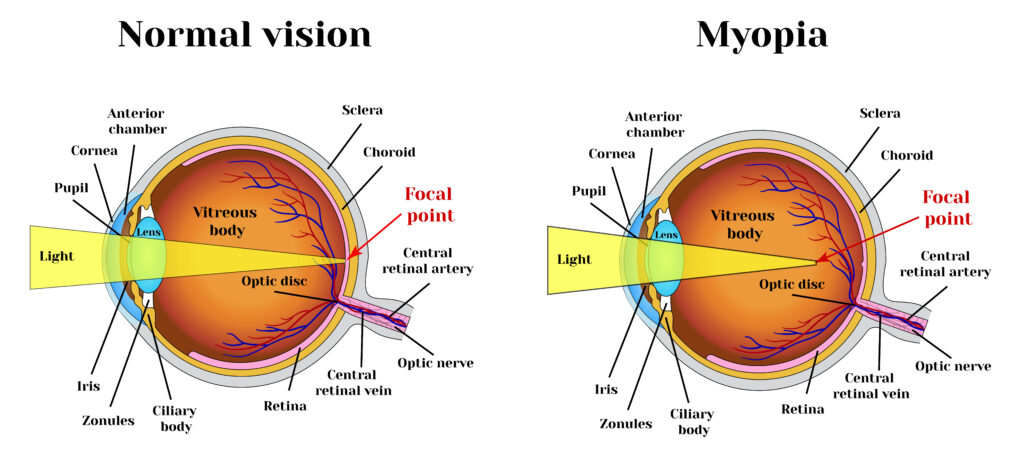Is High Myopia Genetic?
In the case of those who suffer from severe short-sightedness (with a prescription of -6D or greater), you may wonder whether your children will inherit the disease. Is high myopia hereditary, and what are the chances of it being transmitted to them?
We now have a better understanding of how and why myopia develops as a result of a number of research studies on its genetics.
The mechanics of myopia
The retina receives an accurate, sharp image from the lens of the eye in a healthy eye by refracted (bent) light to form an accurate, sharp image. Shortsighted individuals have an incorrect refraction of light, causing the light to bend so that it focuses in front of their retina, creating blurred vision. Eyes with the wrong shape may experience this – they may be too long or they may have a curvature that is incorrect.
The myopia genes
Myopia has been associated with 24 genes identified in 2013 by a study published in Nature Genetics. These genes are responsible for a variety of functions, including eye development, and can be passed down through generations, explaining why myopia often appears to be inherited.
In recent years, researchers have identified additional genetic factors associated with myopia as well as high myopia. In a report published this year by the International Consortium for Refractive Error and Myopia (CREAM), 161 genetic risk factors associated with myopia were described.
A combination of nature and nurture
Myopia is not solely the result of genetic inheritance, however. Our living environments play a part in determining whether the genes we carry will actually be triggered. Understanding these environmental factors will enable us to take more effective measures to prevent myopia from occurring in the future. Although more research needs to be conducted in this area, some factors do appear to be related to elongated eyeballs, which are associated with myopia.
The risk of shortsightedness increases for those who spend a considerable amount of time doing close-up work, such as reading, inside. The lack of daylight or close-up work may be more of a factor than the lack of daylight, but researchers are unsure as yet whether it is the lack of daylight that accounts for the bottle-top specs. As a result, it is a risk factor that can be minimized during early childhood. Professor Norbert Pfeiffer, coauthor of the CREAM study, advises parents to allow their children to spend two hours a day outdoors.
Treatment for high myopia
Ultimately, myopia appears to be caused by a complex combination of genetic and environmental factors. However, if it is gene-based, then it might be impossible to avoid. Luckily, there are a variety of treatment options available.
Those with high myopia who have been told in the past that laser eye correction would not be possible for them because of thin corneas are not necessarily resigned to wearing glasses or contacts. However, advances in laser technology have made it possible to perform laser eye surgery on patients with prescriptions of up to -10D. As a result, this no longer has to be the case.
This newfound opportunity offers those with myopia a chance to gain independence from glasses and contacts and to enjoy the freedom of clear vision.
















